The historical routes of Gabale |
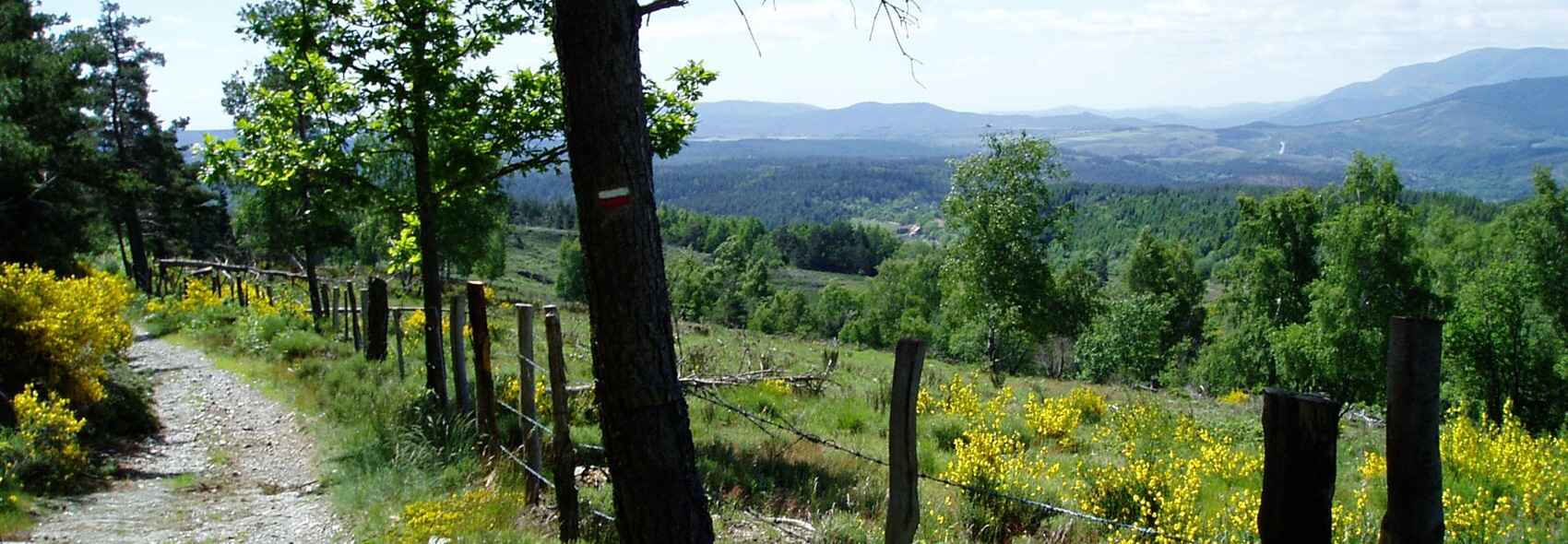
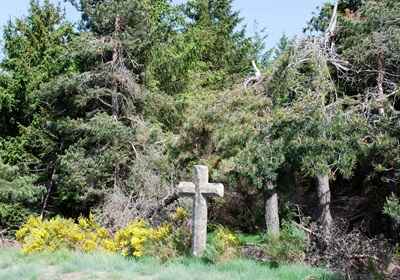 Important communication routes have crisscrossed the Gabale region. The most significant ones are worth mentioning.
Important communication routes have crisscrossed the Gabale region. The most significant ones are worth mentioning.
The most renowned is the Régordane (GR®700), the main road of the pagus Cabalicus, which established connections with the East through the southern provinces of Gaul, notably Provence and Narbonnaise on one side, and the central provinces of Gaul, Arverne and Velai, on the other side. This great road played a crucial role in the formation and development of Langogne. Its existence predates the Roman invasion, which improved it by constructing bridges over rivers, paving it with large stones, placing milestones to mark distances, and erecting stelae with the god Termes to delineate boundaries.
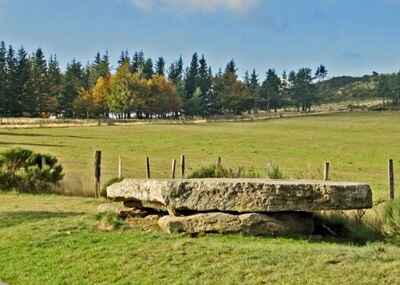 The Régordane began at the port of St-Gilles, on the Rhône arm, which was then heavily trafficked by boats, galleys, ships of all kinds, Phoenicians, Romans from the Levant, coming from Carthage, Rome, Athens, the Bosporus, Palestine, or Egypt. It passed through Nîmes, followed the Gardon, and reached Portes via Alès, climbed the Espinouse, crossed the Ventalon pass, went around Mont Lozère, arrived at Vielvic, then at Estrade near Villefort, orientated itself towards Bayard, Garde-Guérin, Thort, the Mercoire forest, slid by Choisinets, Mas-Richard, towards Langogne, crossed the Langouyrou, traversed Langogne, climbed Cheylaret, cut through the side of Mont-Milan to reach Fontanes and aimed towards the oppidum of Condres, crossed the Allier, and continued on the left bank of this river, following the ridge line dominating the valley of Monistrol-d'Allier and headed towards Brioude, the gateway to Arverne.
The Régordane began at the port of St-Gilles, on the Rhône arm, which was then heavily trafficked by boats, galleys, ships of all kinds, Phoenicians, Romans from the Levant, coming from Carthage, Rome, Athens, the Bosporus, Palestine, or Egypt. It passed through Nîmes, followed the Gardon, and reached Portes via Alès, climbed the Espinouse, crossed the Ventalon pass, went around Mont Lozère, arrived at Vielvic, then at Estrade near Villefort, orientated itself towards Bayard, Garde-Guérin, Thort, the Mercoire forest, slid by Choisinets, Mas-Richard, towards Langogne, crossed the Langouyrou, traversed Langogne, climbed Cheylaret, cut through the side of Mont-Milan to reach Fontanes and aimed towards the oppidum of Condres, crossed the Allier, and continued on the left bank of this river, following the ridge line dominating the valley of Monistrol-d'Allier and headed towards Brioude, the gateway to Arverne.
As it crossed Gévaudan, the Régordane served remarkable points: Vielvic (vitus vicus), a junction of Languedoc, Helvians, and Gabales; Bayard, a crossing point of the Altier, initially by ford and later on a Roman bridge; Garde-Guérin, an eagle's nest and fortress of bandits tamed by Bishop Aldebert of Tournel around the year 1150, and became a peaceful residence for "pariers," guides and protectors of travelers for a toll. It is found near Mercoire and the abbey of the Cistercian nuns, constituting a relay for pilgrims and travelers. Langogne, the Benedictine city, had a Roman bridge and numerous diverging paths. Mont-Milan and Condres were the last oppida for the protection of the Gabale land. Towards this last point, it met the via Bolléna, which probably later became the via Agrippa, then crossed the river on a Roman bridge to head towards Brivate (Brioude).
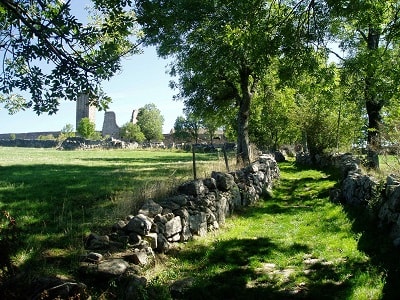 The original name of Régordane seems to be derived from rec or reg (river) and ourdan (path), which combined give reg-ourdan. Its route indeed follows many rivers and streams: Gardon, Altier, Langouyrou, Chapeauroux, Allier. Some authors have mistakenly claimed that the name Régordane came from the name of Emperor Gordian. No analogy supports such a designation. Another hypothesis derives from the Occitan regard, a name given to a lamb born outside the normal season, the name "Régordane" because these animals, born after the summer grazing period and unable to eat the tough late summer grass, had to return to their shepherd. Thus, it would have become "Regord-ane" (?). To complete the information, it should be noted that the muleteers who frequented this "cami" were called "Re-gordans" or "Regordians." Illustrious figures passed along this road: Caesar, traveling from Narbonnaise to Arverne or Aps; around 1162, Pope Alexander III traveling from Maguelonne to Paris; three kings of France, St. Louis in 1254, returning from Aigues-Mortes; Philip III in 1283 and Philip IV in 1285; Constable Du Guesclin reaching Châteauneuf-de-Randon.
The original name of Régordane seems to be derived from rec or reg (river) and ourdan (path), which combined give reg-ourdan. Its route indeed follows many rivers and streams: Gardon, Altier, Langouyrou, Chapeauroux, Allier. Some authors have mistakenly claimed that the name Régordane came from the name of Emperor Gordian. No analogy supports such a designation. Another hypothesis derives from the Occitan regard, a name given to a lamb born outside the normal season, the name "Régordane" because these animals, born after the summer grazing period and unable to eat the tough late summer grass, had to return to their shepherd. Thus, it would have become "Regord-ane" (?). To complete the information, it should be noted that the muleteers who frequented this "cami" were called "Re-gordans" or "Regordians." Illustrious figures passed along this road: Caesar, traveling from Narbonnaise to Arverne or Aps; around 1162, Pope Alexander III traveling from Maguelonne to Paris; three kings of France, St. Louis in 1254, returning from Aigues-Mortes; Philip III in 1283 and Philip IV in 1285; Constable Du Guesclin reaching Châteauneuf-de-Randon.
Merchants’ and Muleteers’ Path: The “Régourdans” carried cloth, wine, salt, and other goods from Languedoc to Puy-en-Velay along this ancient path of transhumance and trade. The path was lined with dolmens, rock inscriptions, and still-mysterious messages.
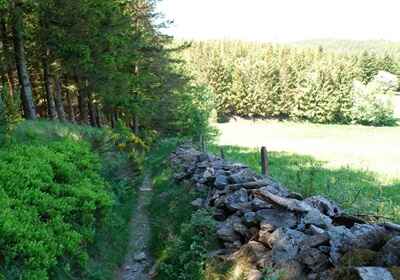 Sacred Path for Pilgrims: Pilgrims went to the tomb of Saint Gilles or to the Black Virgin of Puy via the Régordane. This path was connected to the paths of Saint James of Compostela via the via Podiensis (GR65) at Puy-en-Velay and the via Tolosana (GR653) at Saint-Gilles. The path was dotted with sacred sites and lined with a chain of hospitals and lazar houses, of which Pradelles preserves one of the last four remaining in Europe. Many personalities, such as Pope Urban V, Adhémar de Monteils (bishop of Puy-en-Velay and papal legate), and Raymond of Saint Gilles, traveled this sacred path.
Sacred Path for Pilgrims: Pilgrims went to the tomb of Saint Gilles or to the Black Virgin of Puy via the Régordane. This path was connected to the paths of Saint James of Compostela via the via Podiensis (GR65) at Puy-en-Velay and the via Tolosana (GR653) at Saint-Gilles. The path was dotted with sacred sites and lined with a chain of hospitals and lazar houses, of which Pradelles preserves one of the last four remaining in Europe. Many personalities, such as Pope Urban V, Adhémar de Monteils (bishop of Puy-en-Velay and papal legate), and Raymond of Saint Gilles, traveled this sacred path.
Epic and Historical Path: The Régordane Path was taken by Caesar when he crossed the Cévennes, and it was the scene of the exploits of William of Orange, who delivered Nîmes from the Saracens, recounted in one of the oldest chansons de geste, the Charroi de Nîmes. The itinerary is at the heart of significant movements in medieval history. It was also traversed by writers such as Alphonse Daudet, Sergei Prokofiev, and Jouany du Désert.
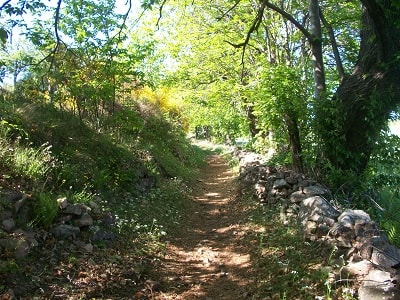 Path of Tales and Freedoms: The Régordane Path carried the successive challenges to the Roman Church, Arianism, Catharism, and Protestantism. It also witnessed the struggles for freedom of conscience and human rights, with figures such as Rabaut Saint-Étienne (a pastor from Nîmes) and the Marquis de Lafayette. Not to mention the struggles of the Camisards and those of the resistors during World War II and the Cevennes miners in their quest for social rights.
Path of Tales and Freedoms: The Régordane Path carried the successive challenges to the Roman Church, Arianism, Catharism, and Protestantism. It also witnessed the struggles for freedom of conscience and human rights, with figures such as Rabaut Saint-Étienne (a pastor from Nîmes) and the Marquis de Lafayette. Not to mention the struggles of the Camisards and those of the resistors during World War II and the Cevennes miners in their quest for social rights.
The second route in the region to be named is the via Agrippa, named after "Vispanius Agrippa," a Roman general, or "Menesius Agrippa," a consul. It connected Saint-Paulien (Revesio), the capital of Vellave, to Javols (Anderitum), the capital of Gabale, and continued into the region of the Ruthenians.Also known as via Agrippensis in Latin, it refers to the network of Roman roads in Roman Gaul established by Marcus Vipsanius Agrippa in the 1st century BC. Agrippa, who was entrusted by Octavius with the organization of Gaul, created this network to facilitate travel and trade in the region.
The via Agrippa radiated from the new Roman strategic settlement, Lugdunum (today Lyon). It consisted of four major roadways: A route to the Atlantic, from Lugdunum to Saintes. A route to the English Channel and the North Sea, passing through Chalon-sur-Saône, Châlons-en-Champagne, Reims, Beauvais, and Amiens. A route to the Rhine, via Langres and Trier. A route to the south, leading to Arles and Marseille.
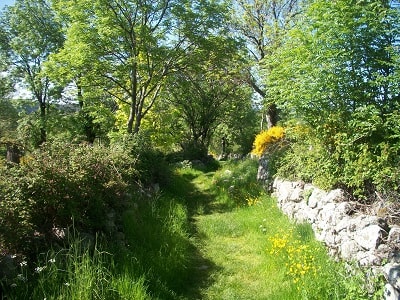 Experts disagree on the precise dating of the construction of these roads, but they agree that their creation took place under Agrippa and Augustus. Estimates vary between 39/38 BC, 22/21 BC, and 16 to 13 BC. Remnants of the via Agrippa remain in various regions, notably in Valentinois (the region of Valence). The route of this road was roughly the same as that of the current National Route 7. The via Agrippa left a lasting mark on the landscape of the Massif Central, reflecting its historical significance in trade and travel.
Experts disagree on the precise dating of the construction of these roads, but they agree that their creation took place under Agrippa and Augustus. Estimates vary between 39/38 BC, 22/21 BC, and 16 to 13 BC. Remnants of the via Agrippa remain in various regions, notably in Valentinois (the region of Valence). The route of this road was roughly the same as that of the current National Route 7. The via Agrippa left a lasting mark on the landscape of the Massif Central, reflecting its historical significance in trade and travel.
Finally, a third road called the Bolléna, which the ancients like Ptolemy, Strabo, and Lucan referred to as connecting Revesio to Anderitum, via Condates (Condres), then Ad Silanum (Rodez), via Puech-Cremat, in Ruthenian country, may well be the original name of the via Agrippa.
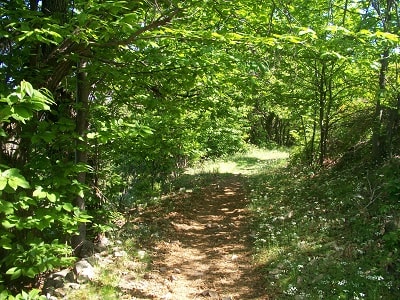 The Bollène road, also known as via Bollena in Latin, was a major Roman road that connected Lyon to Bordeaux. It was created around 43 BC under the direction of Agrippa, a Roman general and son-in-law of Emperor Augustus. This road played an essential role in trade and travel across Gaul. The via Bollène crossed a large part of the Massif Central, notably the Forez, which was then the land of the Segusiaves. It was one of the most important roads of the Gallo-Roman world. Today, remnants of the via Bollène remain in various regions, testifying to its historical significance.
The Bollène road, also known as via Bollena in Latin, was a major Roman road that connected Lyon to Bordeaux. It was created around 43 BC under the direction of Agrippa, a Roman general and son-in-law of Emperor Augustus. This road played an essential role in trade and travel across Gaul. The via Bollène crossed a large part of the Massif Central, notably the Forez, which was then the land of the Segusiaves. It was one of the most important roads of the Gallo-Roman world. Today, remnants of the via Bollène remain in various regions, testifying to its historical significance.
Many other roads or major paths existed, notably to connect Condres, the oppida of Mont-Milan, Châteauneuf, and Grèzes. Parts of "strada," following a designation commonly used in the patois language, most likely a deformation of the Latin "stratta," can be found in the vicinity of these various camps.
Paths called drailles or drayes crisscross the land. They generally follow the transhumance directions of sheep flocks, which went to summer in the mountains and connected habitation centers. One of them left from Langogne, passed through Mas-Neuf, the Mazigon under Pratellae (Pradelles), marked by the stay of Roman legions that left traces in the form of coins, medals, weapons, and headed towards St-Chaffre and Mont-Anis.
Later, it became an important communication route annually taken by knights, troubadours, and pilgrims from the southern regions who carried "the Falcon to the miraculous Virgin of Puy-en-Velay."
Former holiday hotel with a garden along the Allier, L'Etoile Guest House is located in La Bastide-Puylaurent between Lozere, Ardeche, and the Cevennes in the mountains of Southern France. At the crossroads of GR®7, GR®70 Stevenson Path, GR®72, GR®700 Regordane Way, GR®470 Allier River springs and gorges, GRP® Cevenol, Ardechoise Mountains, Margeride. Numerous loop trails for hiking and one-day biking excursions. Ideal for a relaxing and hiking getaway.
Copyright©etoile.fr